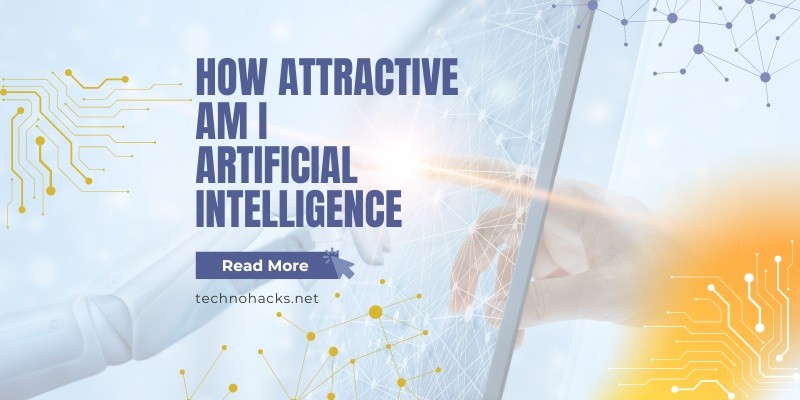Last Updated on May 5, 2025 by Jim C.
Artificial Intelligence (AI) has permeated various aspects of our lives, from healthcare to entertainment. One intriguing application is in the realm of beauty and attractiveness assessment. AI tools are now capable of analyzing facial features and providing attractiveness ratings, a task traditionally reserved for human judgment. This article explores the intersection of AI and beauty evaluation, examining the technology behind it, its implications, and the controversies it sparks.
Understanding AI-Based Attractiveness Assessment
AI-based attractiveness assessment tools utilize machine learning algorithms to evaluate facial features and provide a score or rating. These tools analyze various aspects of the face, such as symmetry, proportion, and skin texture, to determine attractiveness. Examples of such tools include Nyckel, which uses machine learning to evaluate facial attractiveness, and QOVES’ Facial Assessment Tool, which considers demographics, skin health, and other parameters.
These tools often rely on large datasets of facial images and corresponding attractiveness ratings to train their algorithms. The AI learns from these datasets to identify patterns and features that are commonly associated with attractiveness. However, the accuracy and fairness of these assessments can be influenced by the quality and diversity of the training data.
The Science Behind AI Attractiveness Ratings
The algorithms used in AI attractiveness assessments are typically based on machine learning models such as k-nearest neighbors (KNN) and support vector regression (SVR). These models analyze facial feature parameters, such as symmetry and proportion, to predict attractiveness rankings. For instance, a study by Moridani et al. demonstrated that an intelligent machine could learn and predict facial attractiveness with high accuracy, achieving a correlation coefficient higher than that of human ratings.
Data sets used for training these models often include thousands of facial images with corresponding attractiveness scores. These scores are usually provided by human raters, and the AI learns to mimic human judgment through continuous training and improvement. However, the reliance on human-provided data can introduce biases, as human perceptions of beauty are influenced by cultural and societal norms.
Implications of AI Attractiveness Evaluation
The use of AI for attractiveness evaluation has several implications:
- Psychological Impact on Users: Receiving an attractiveness score from an AI can affect individuals’ self-esteem and body image. While some may find it empowering, others may feel judged or inadequate based on the AI’s assessment.
- Applications in Various Industries: AI attractiveness tools can be used in the beauty and fashion industries for personalized recommendations, in social media for enhancing user profiles, and even in online dating to match individuals based on perceived attractiveness.
- Societal Effects: AI-defined beauty standards can reinforce existing stereotypes and biases, potentially marginalizing individuals who do not conform to these standards.
Critiques and Controversies
AI attractiveness assessments are not without their controversies. One major concern is the potential for bias in these tools. Studies have shown that AI can inherit and perpetuate biases present in the training data. For example, a beauty contest judged by AI in 2016 predominantly selected winners with white skin, highlighting racial biases in the algorithm.
Biases can arise from several sources, including the data used to train the AI, the design of the algorithms, and the societal norms embedded in the data. These biases can lead to unfair and discriminatory outcomes, particularly for individuals from underrepresented groups. Addressing these biases requires a structured approach to ensure inclusivity and fairness in AI systems.
The Future of AI and Attractiveness
The future of AI in attractiveness assessment holds promise for technological advancements and ethical considerations:
- Emerging Technologies and Improvements: Continuous improvements in machine learning and computer vision can enhance the accuracy and fairness of AI attractiveness tools. Techniques such as deep learning and neural networks can provide more nuanced and sophisticated assessments.
- Integration with Augmented Reality: AI attractiveness tools can be integrated with augmented reality (AR) applications to provide real-time beauty recommendations and virtual makeovers. This can enhance user experience and offer personalized beauty solutions.
- Ethical Guidelines and Regulations: Developing ethical guidelines and regulations for AI attractiveness assessments is crucial to ensure responsible use. This includes addressing biases, ensuring transparency, and protecting user privacy.
Conclusion
AI-based attractiveness assessment is a fascinating intersection of technology and human perception. While these tools offer innovative applications and insights, they also raise important ethical and societal questions. As AI continues to evolve, it is essential to balance technological advancements with considerations of fairness, inclusivity, and human dignity. The future of AI in beauty assessment holds great potential, but it must be navigated with care and responsibility.

